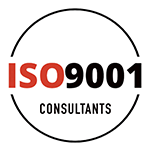When you are about to enforce exciting changes in your organisation, it is easy to get exhilarated, however, not everyone may share your enthusiasm. Imagine that you are implementing a new Quality Management System (QMS) based on ISO 9001.
You have been working on understanding the standard’sstandard’s recommendations, studying the benefits of the QMS, and now you are ready to start, but you are observing resistance from all sides. This resistance is negatively impacting your implementation plan. Maybe, some people are refusing to adopt the new system, and others are getting frustrated by the new processes.
Even those ready to welcome the QMS cannot interact with it due to the lack of cooperation. Moreover, the company morale is low, and tensions are high. If this delicate situation is mishandled, the transition to your new QMS is bound to fail. Organisational resistance is somewhat natural and inevitable, but this does not mean it is insurmountable.
To overcome it and to get your team onboard with ISO 9001, you must understand the reason behind the resistance and work to move past it. This article will discuss the top causes of resistance and provide practical steps to deal with resistance. you can learn more on preparation for ISO 9001 page.
What is resistance to change?
Organisational resistance is the reluctance to adopt change when it is presented within the company. Employees can either be covert or overt about their willingness to adapt to these new processes, from expressing their resistance publicly to unknowingly resisting change through their actions.

It is called individual resistance when employees resist change based on their unique perceptions. Similarly, when the organisation as a whole resists change and wants to maintain its original “status quo,” it is termed organisational resistance. Irrespective of the type of resistance, organisations cannot adapt to the new processes until they cater to the internal demands.
Causes for resistance
There are a variety of causes for organisational resistance. Sometimes, employees are not confident in adapting to new changes. When people feel threatened by their real or imagined shortcomings, they tend to protect themselves by resisting change. Additionally, sometimes the lack of communication creates resistance.
Employees often ask what’swhat’s in it for them whenever an organisation attempts to implement a change. When you begin to address their concerns, you will increase their engagement. Hence, to mitigate organisational resistance, it is essential for business owners to build enthusiasm and support the efforts of their employees.
How to overcome resistance to change?
Often, employees resist change because they feel that their opinion does not matter and would not impact the decision to make an organisational change. However, one of the core requirements of ISO 9001 is employee engagement.
Hence, it becomes critical to collect employee inputs before the change to enhance employee engagement. It is helpful to run surveys with your team on how they feel about the QMS and how they can make the implementation process more accessible.

Similarly, to avoid resistance to change, assure the employees that the new process will significantly benefit them. Prioritise educating the team on how these new changes will directly make their lives better and improve their day-to-day operations. Moreover, it is essential to provide evidence through ongoing training so that the employees feel confident and comfortable navigating the new QMS.
Benefits of ISO 9001 for your employees
To mitigate any resistance toward change, it is critical to convey the employee-focused benefits of ISO 9001. Some of these benefits include:
- Less rework, more efficiency: Employees hate when they finish a long and demanding job only to discover a significant mistake. The biggest benefit of ISO 9001 is that it reduces disruptions and does not add extra work to your already busy processes. As the standard streamlines your processes, defining them and optimising them, it is easier for employees to trace the source of problems. This means that fewer disruptions and fewer mistakes are committed, reducing the need for unnecessary reworks.
- Less confusion, more communication: The ISO 9001 standard focuses on internal communication, emphasising clarity at every project step. Clarity about roles, responsibilities and tasks reduces confusion, frustration and mistakes with inconsistent communication. As ambiguity is reduced, employees begin to enjoy their tasks.

- More involvement: As mentioned above, one of the critical principles of the ISO 9001 standard is employee engagement. The standard understands that every employee has a unique perspective and therefore recommends that inputs from your employees should be collected. The certification process involves everyone, from top management down, helping your team take ownership of quality. When the ISO 9001 standard is implemented correctly, it fosters a “quality culture”” where everyone at every level seeks to improve the business. Your employees, therefore, begin to feel like an essential component of the organisation.
Conclusion
Organisational resistance is natural and inevitable, but it can be managed by appropriately involving your team in the change process. Business owners should highlight the employee-focused benefits of ISO 9001 so that their employees become excited about the upcoming QMS. Some of these benefits include more involvement of the employees, less rework and more clarity about their roles and responsibilities.








Users Comments
Get a
Quote